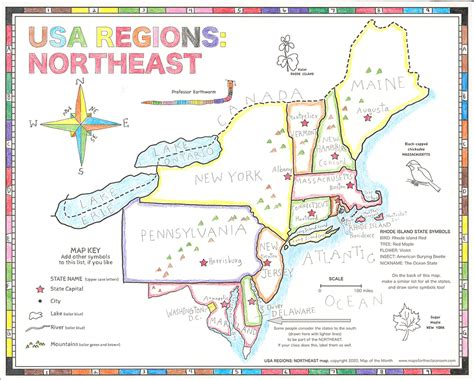What Are Natural Resources In The United States

The United States is endowed with a diverse range of natural resources, which have played a crucial role in shaping the country’s economy, environment, and society. Natural resources are materials or substances that occur naturally in the environment and can be used for economic, social, or cultural benefits. In this article, we will explore the various types of natural resources found in the United States, their significance, and the challenges associated with their management and conservation.
The United States is rich in natural resources, including water, minerals, forests, fish, and wildlife. These resources are distributed across the country, with different regions having their unique characteristics and resource endowments. For instance, the western United States is known for its abundant mineral resources, including copper, gold, and silver, while the eastern United States is home to vast forests and timber resources. The country's natural resources have been a driving force behind its economic growth and development, with many industries relying heavily on these resources.
Natural Resource Categories

Natural resources in the United States can be broadly categorized into several groups, including renewable and non-renewable resources. Renewable resources are those that can be replenished naturally over time, such as water, timber, and fish. Non-renewable resources, on the other hand, are finite and cannot be replenished, including minerals, fossil fuels, and nuclear energy. The United States has an abundance of both renewable and non-renewable resources, which are vital for the country’s energy, industrial, and economic needs.
Water Resources
Water is one of the most essential natural resources in the United States, with the country having an extensive network of rivers, lakes, and wetlands. The United States has over 250,000 rivers, with the longest being the Missouri River, stretching over 2,540 miles. The country’s water resources are used for various purposes, including drinking water, irrigation, industry, and recreation. However, water scarcity and pollution are significant challenges facing the United States, with many regions experiencing droughts and water shortages.
Key Points
- The United States has a diverse range of natural resources, including water, minerals, forests, fish, and wildlife.
- Natural resources are categorized into renewable and non-renewable resources, with renewable resources being replenished naturally over time.
- Water is a vital natural resource in the United States, with the country having an extensive network of rivers, lakes, and wetlands.
- The United States is rich in mineral resources, including copper, gold, silver, and coal.
- Forests and timber resources are significant in the United States, with the country having over 749 million acres of forestland.
Mineral Resources

The United States is a significant producer of mineral resources, including copper, gold, silver, and coal. The country has large deposits of these minerals, particularly in the western United States. For instance, the state of Alaska is known for its rich gold deposits, while the state of Wyoming is a leading producer of coal. Mineral resources are essential for various industries, including construction, manufacturing, and energy production.
Forest Resources
Forests and timber resources are also significant in the United States, with the country having over 749 million acres of forestland. The majority of these forests are located in the eastern United States, with the state of Alabama having the largest forest cover. Forests provide various ecosystem services, including carbon sequestration, soil conservation, and wildlife habitat. However, deforestation and forest degradation are significant concerns, with many forests facing threats from urbanization, agriculture, and climate change.
| Mineral Resource | Production (2020) |
|---|---|
| Copper | 1.3 million metric tons |
| Gold | 200,000 kilograms |
| Silver | 1,000 metric tons |
| Coal | 694 million short tons |

Challenges and Opportunities
The United States faces several challenges in managing and conserving its natural resources, including climate change, pollution, and overexploitation. Climate change is altering the distribution and abundance of natural resources, with many species facing extinction due to habitat loss and fragmentation. Pollution is also a significant concern, with many waterways and landscapes being degraded by human activities. However, there are also opportunities for sustainable development and resource management, including the development of renewable energy sources, such as wind and solar power, and the promotion of eco-tourism and sustainable forestry practices.
What are the most significant natural resources in the United States?
+The United States has a diverse range of natural resources, including water, minerals, forests, fish, and wildlife. Water is a vital resource, with the country having an extensive network of rivers, lakes, and wetlands. Mineral resources, such as copper, gold, and silver, are also significant, particularly in the western United States.
What are the challenges facing natural resource management in the United States?
+The United States faces several challenges in managing and conserving its natural resources, including climate change, pollution, and overexploitation. Climate change is altering the distribution and abundance of natural resources, while pollution is degrading many waterways and landscapes. Overexploitation is also a concern, with many resources being extracted at unsustainable rates.
What are the opportunities for sustainable development and resource management in the United States?
+There are several opportunities for sustainable development and resource management in the United States, including the development of renewable energy sources, such as wind and solar power, and the promotion of eco-tourism and sustainable forestry practices. Sustainable agriculture and conservation practices can also help to reduce the environmental impacts of resource extraction and promote biodiversity conservation.
In conclusion, the United States is endowed with a diverse range of natural resources, which are essential for the country’s economy, environment, and society. However, the management and conservation of these resources require a balanced approach that takes into account the economic, social, and environmental benefits of these resources. By promoting sustainable practices and reducing the environmental impacts of resource extraction, the United States can ensure the long-term conservation of its natural resources and promote sustainable development.



